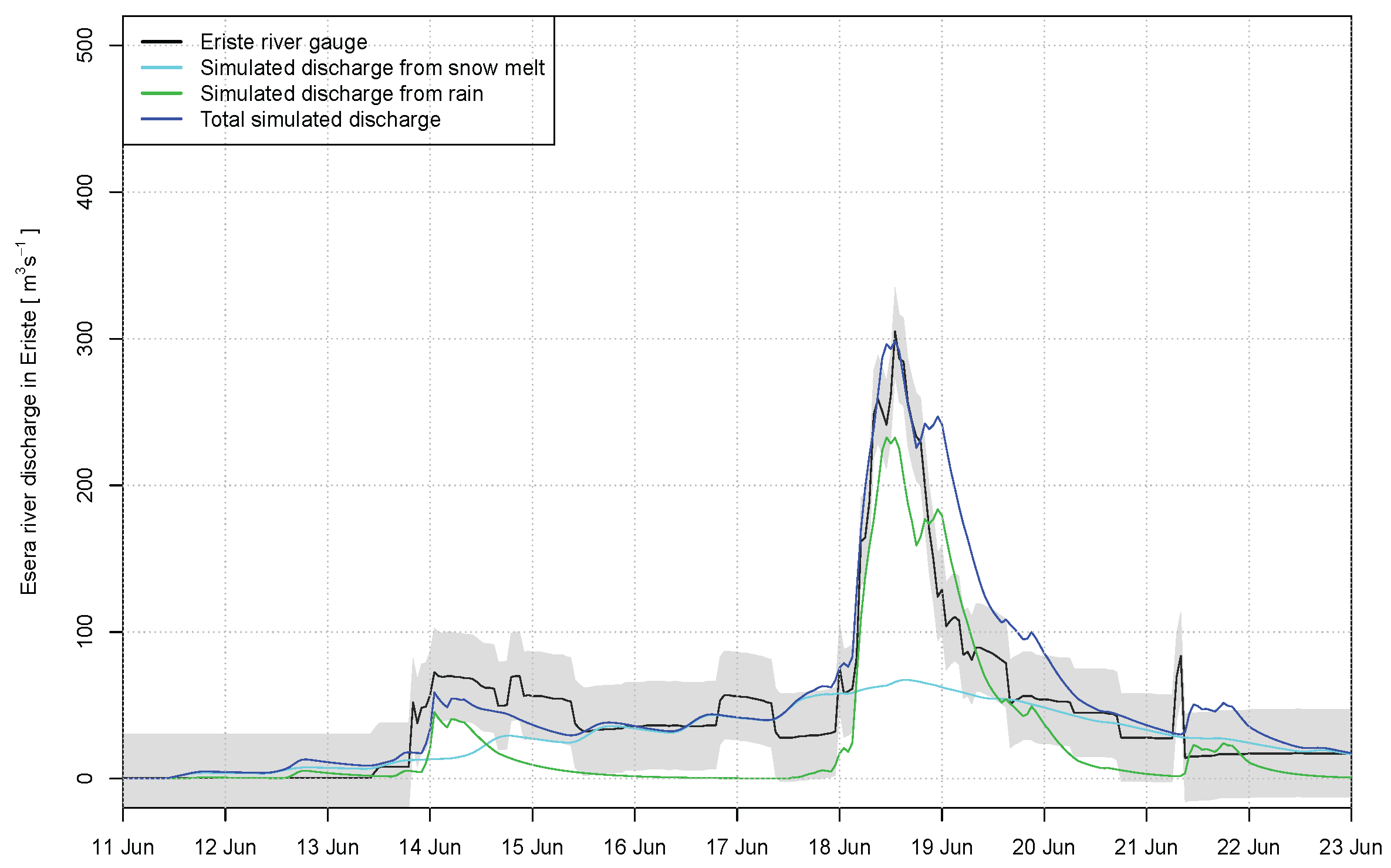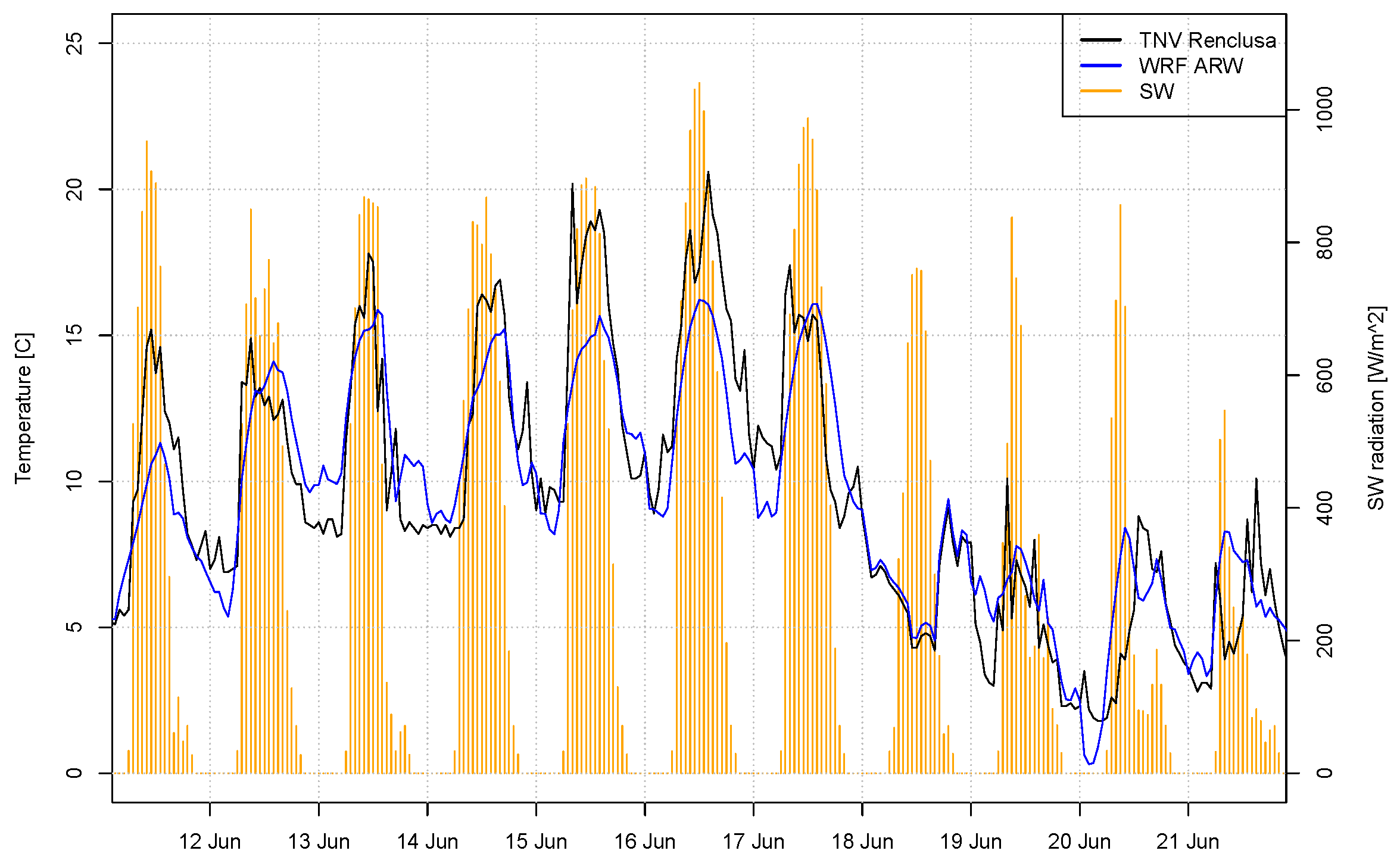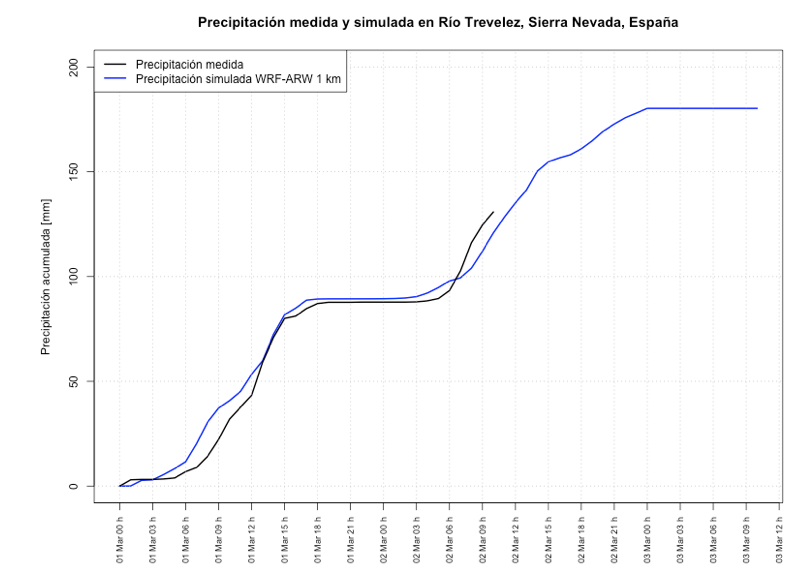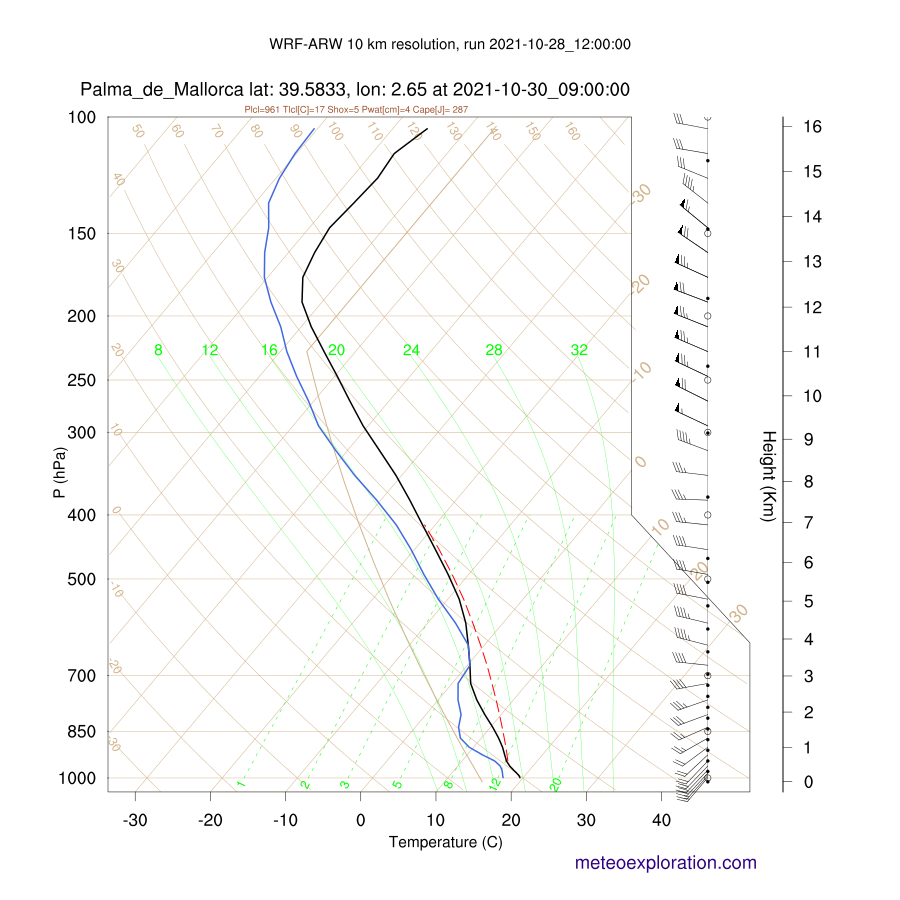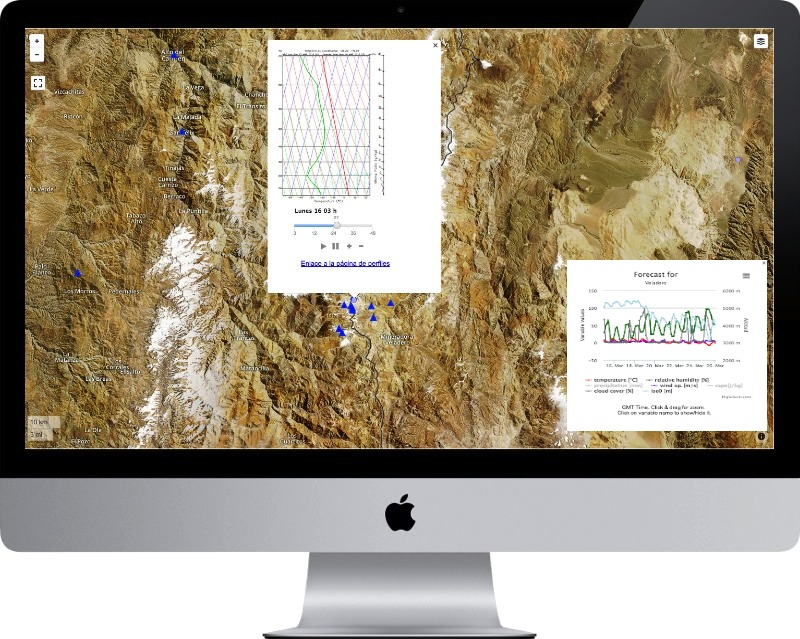The importance of resolution
In mountain regions the resolution of the model is important in order to simulate the impact of topography on weather systems. At 0.25° or 0.50° resolution, global models do not represent mountain ranges accurately, missing the highest elevation by thousands of meters. It is therefore necessary to downscale the results using models that can run over a smaller region but at higher resolution.
An example of the importance of resolution is illustrated in Figure 1. As resolution decreases, the relief is smoothed and elevation decreases. Weather models at lower resolution cannot discriminate the impact of mountains, such as wind drag, wind channelling, orographic precipitation, etc. and therefore are less reliable than higher resolution models.
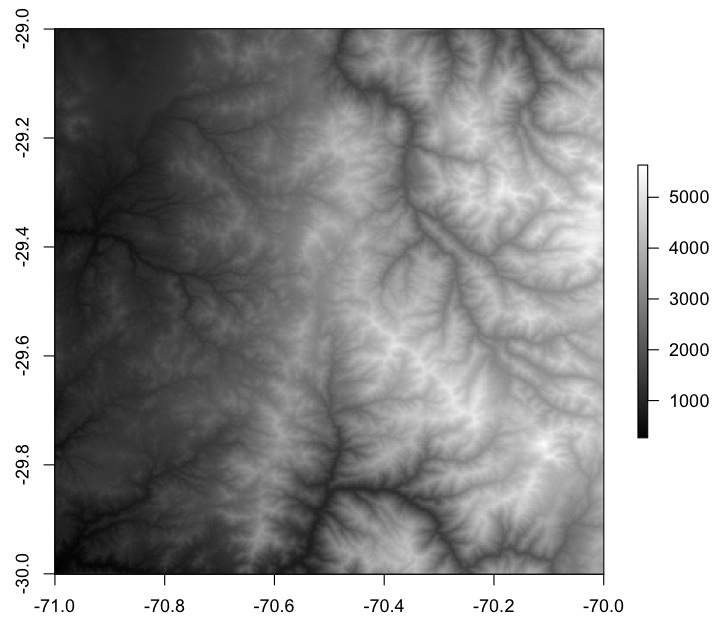
a) 30 m
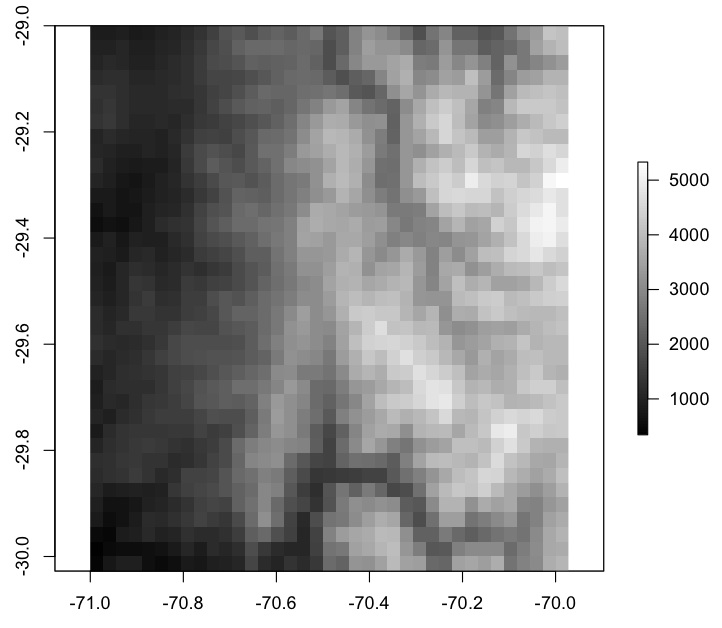
b) 3 km
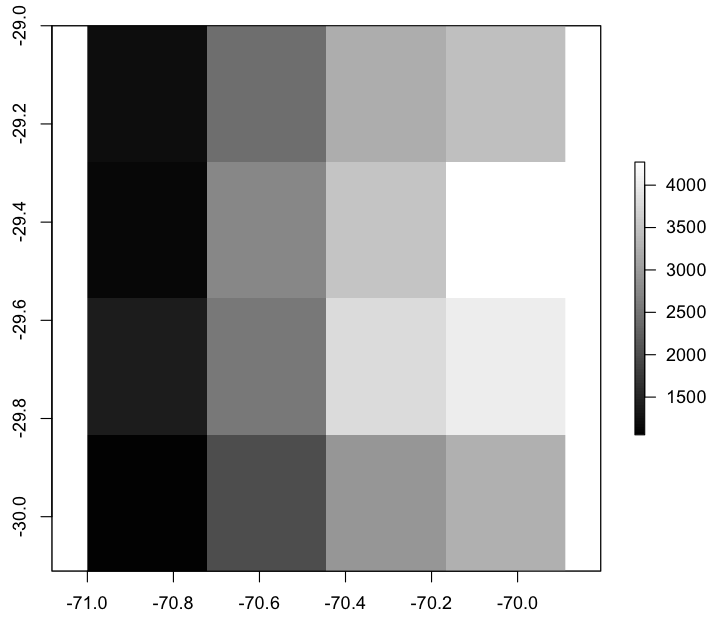
c) 30 km
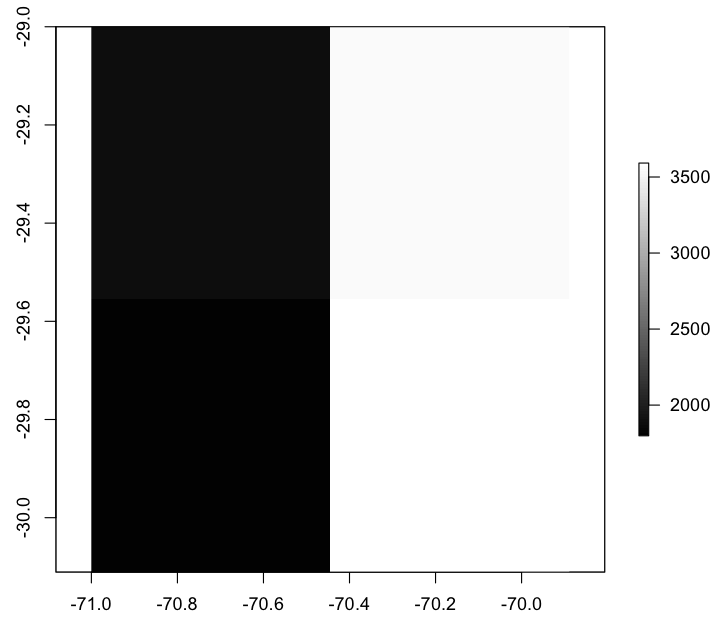
d) 60 km
Figure 1 Digital Elevation Model at different resolution (30 m, 3 km, 30 km and 60 km). Note the highest elevation is in excess of 5000 m at 30 m and 3km, and only 3500 m at 60 km resolution.
High resolution simulations also have advantages when estimating solar energy, precipitation, snow melt and runoff and many other meteorological parameters.
We can offer the results in a user friendly, interactive platform, that allows a rapid evaluation and fast response.
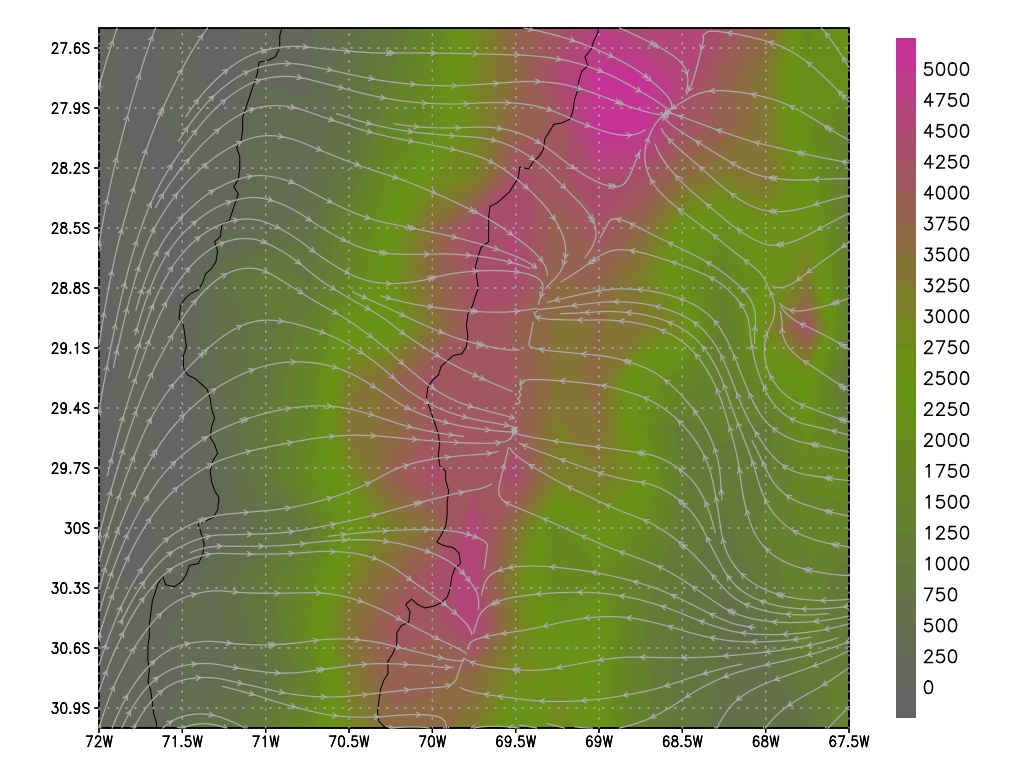
a) GFS 0p25
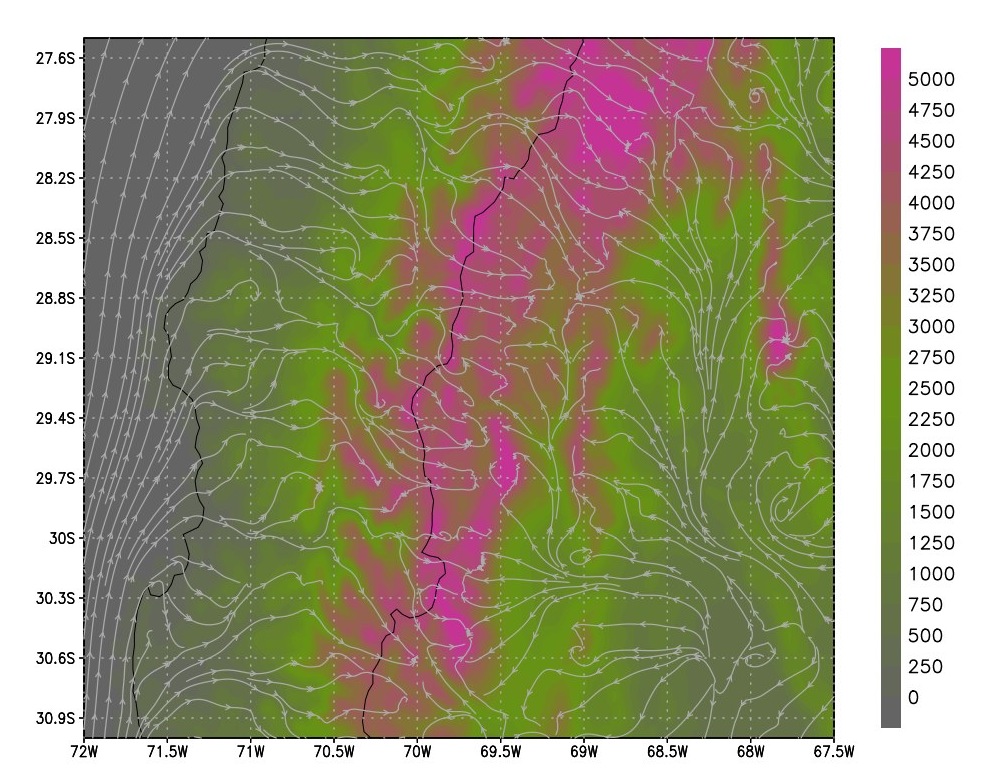
b) WRF 4 km
Figure 2. Surface elevation and wind streams over the Arid Andes of Chile and Argentina. On the left panel a GFS simulation at 0.25° resolution, on the right panel a WRF simulation at 3km resolution.
These differences in resolution have a strong impact when modelling wind speed as seen in Figure 2. Note how the WRF, on the right panel, can identify individual valleys and how the wind streams follow the main valleys. This in turn will affect wind velocity and therefore wind energy forecast, wind potential or the exposure of workers in operations at high altitude.
